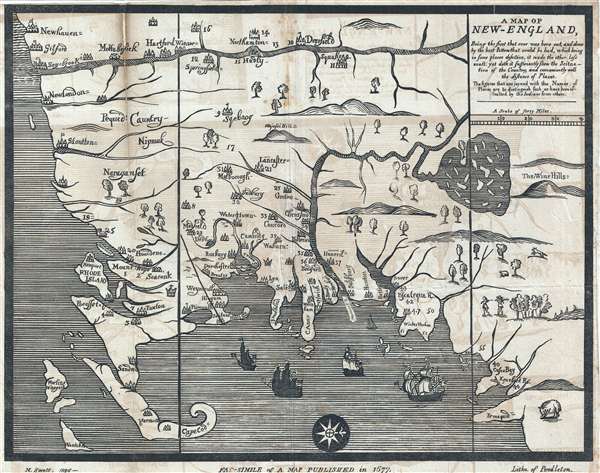Digital Image: 1826 / 1677 Pendleton / Foster Map of New England
NewEngland-pendleton-1826_d
Description
FOR THE ORIGINAL ANTIQUE MAP, WITH HISTORICAL ANALYSIS, CLICK HERE.
Digital Map Information
Geographicus maintains an archive of high-resolution rare map scans. We scan our maps at 300 DPI or higher, with newer images being 600 DPI, (either TIFF or JPEG, depending on when the scan was done) which is most cases in suitable for enlargement and printing.
Delivery
Once you purchase our digital scan service, you will receive a download link via email - usually within seconds. Digital orders are delivered as ZIP files, an industry standard file compression protocol that any computer should be able to unpack. Some of our files are very large, and can take some time to download. Most files are saved into your computer's 'Downloads' folder. All delivery is electronic. No physical product is shipped.
Credit and Scope of Use
You can use your digial image any way you want! Our digital images are unrestricted by copyright and can be used, modified, and published freely. The textual description that accompanies the original antique map is not included in the sale of digital images and remains protected by copyright. That said, we put significant care and effort into scanning and editing these maps, and we’d appreciate a credit when possible. Should you wish to credit us, please use the following credit line:
Courtesy of Geographicus Rare Antique Maps (https://www.geographicus.com).
How Large Can I Print?
In general, at 300 DPI, you should at least be able to double the size of the actual image, more so with our 600 DPI images. So, if the original was 10 x 12 inches, you can print at 20 x 24 inches, without quality loss. If your display requirements can accommodate some loss in image quality, you can make it even larger. That being said, no quality of scan will allow you to blow up at 10 x 12 inch map to wall size without significant quality loss. For more information, it is best consult a printer or reprographics specialist.
Refunds
If the high resolution image you ordered is unavailable, we will fully refund your purchase. Otherwise, digital images scans are a service, not a tangible product, and cannot be returned or refunded once the download link is used.
Cartographer S
Pendleton's Lithography (1825 – 1836) was an American lithography firm active in Boston during the early 19th century. The firm was founded by brothers John and William S. Pendleton. Little is known of John, but William apparently moved to Boston from Montreal, Canada with Alexander McKenzie, a copper plate engraver. The two set up business with Abel Bowen from about 1820 to 1825. Around this time John Pendleton entered the picture. He and William purchased some lithographic tools from a Boston merchant named only Thaxter, who apparently acquired them in Europe but did not understand their use. The Pendleton's subsequently became the first lithographers in Boston. Their work was respected for portraiture, landscape prints, music covers, and other illustrations. Among William Pendleton's apprentices are the famous 19th century lithographers Benjamin F. Nutting and Nathaniel Currier (of Currier and Ives). John Pendleton retired from the firm in 1828, but it continued to operate under William. William, in turn, sold the firm to his bookkeeper, Thomas Moore, who changed the name but maintained the same business practices. In 1840, Moore sold out to Benjamin W. Thayer. Pendleton's Lithography was based in three separate locations in Boston: Harvard Place (1825-1826), Graphic Court (1826-ca.1832), and finally Washington Street (ca.1836). More by this mapmaker...
Moses Swett (1804 - December 20, 1838) was an American artist, lithographer, and draughtsman. Swett worked for a time with the Pendleton Lithography firm of Boston before relocating in 1830 to Baltimore and partnering with George Endicott to found Endicott and Swett, located in Graphic Hall. In 1831 the partners relocated again, this time to New York City. The partnership dissolved in July of 1834, and Swett began to publish independently in New York. In 1837, he relocated to Washington D.C. where he issued several political cartoons. Swett returned to Boston in 1838 where he died of unknown causes on December 20. Learn More...

